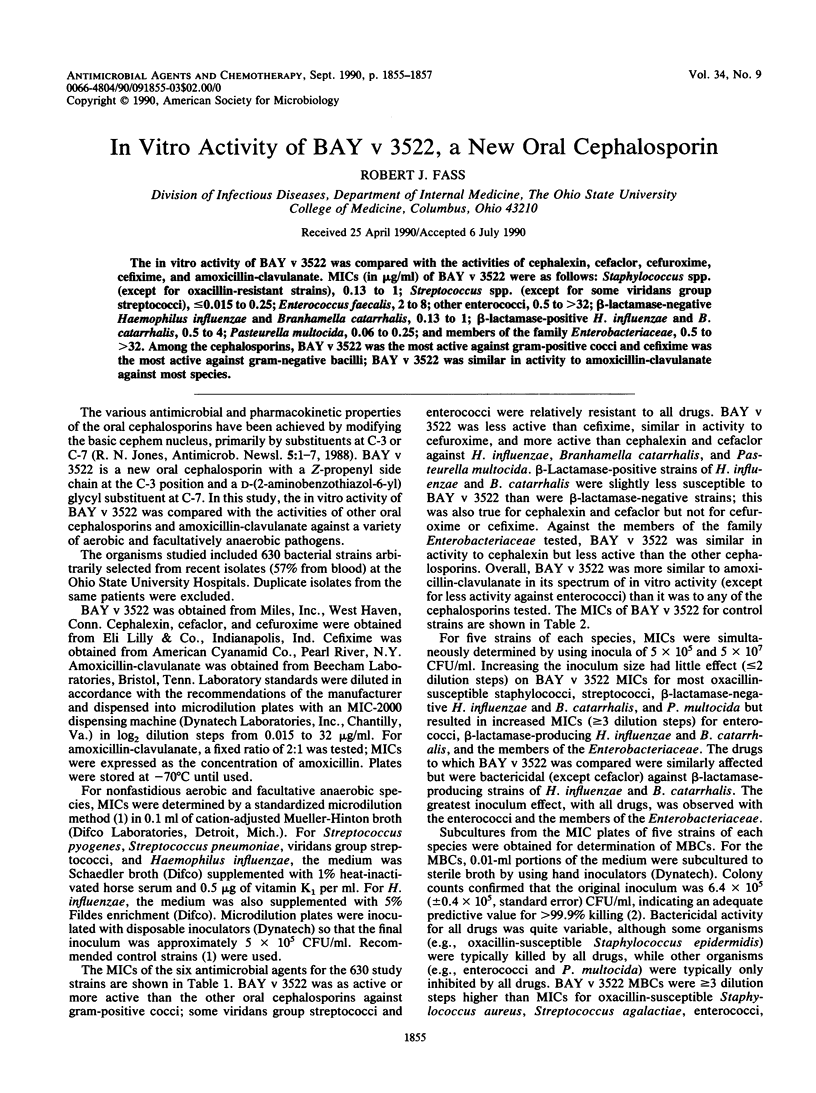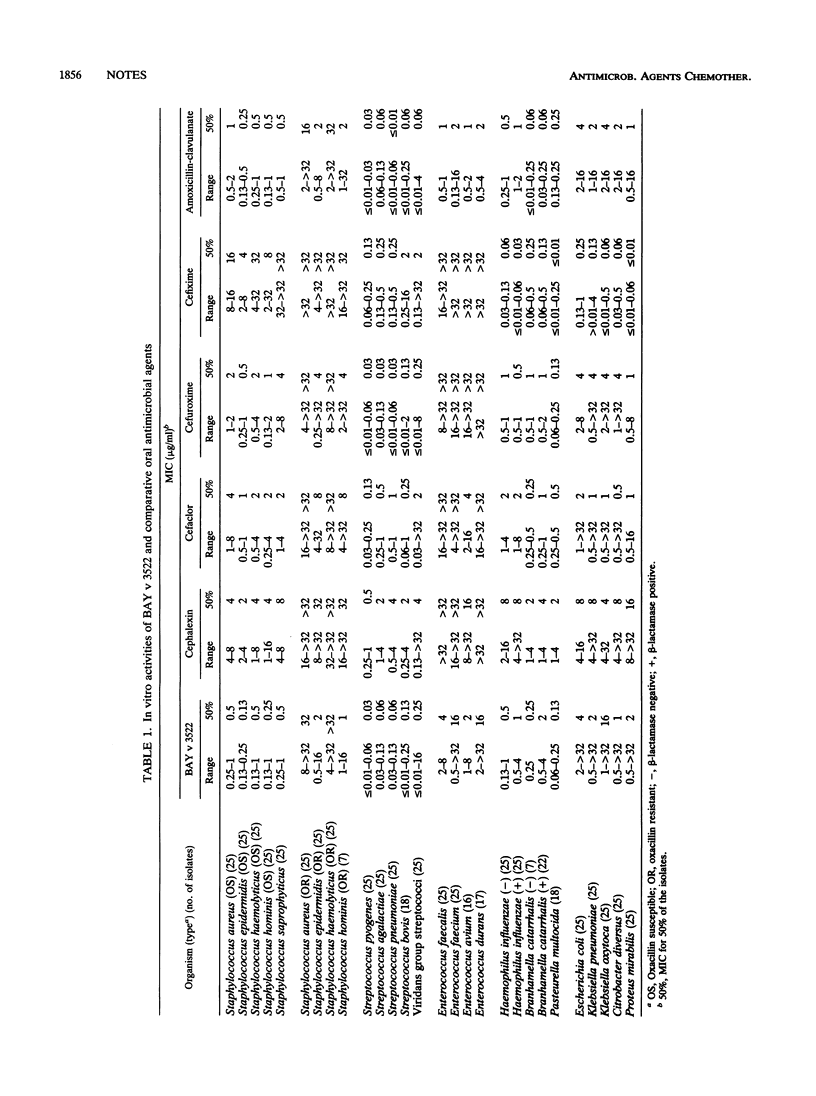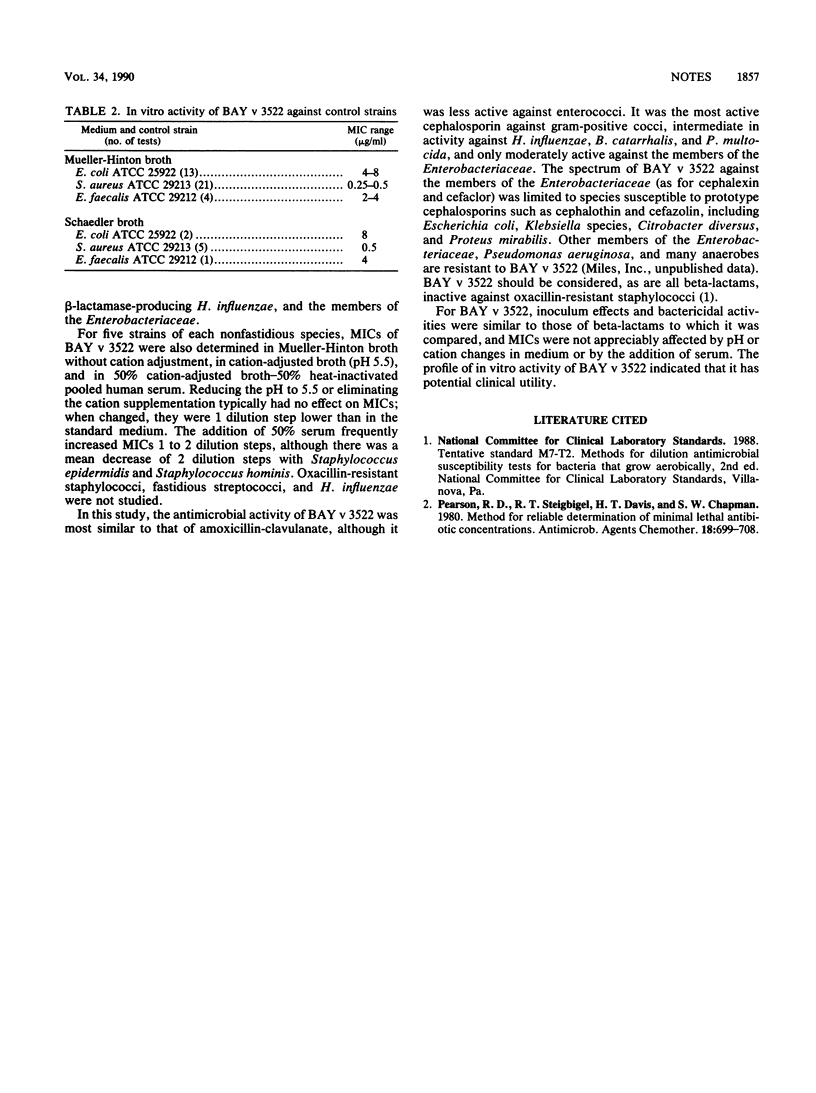Abstract
The in vitro activity of BAY v 3522 was compared with the activities of cephalexin, cefaclor, cefuroxime, cefixime, and amoxicillin-clavulanate. MICs (in micrograms/ml) of BAY v 3522 were as follows: Staphylococcus spp. (except for oxacillin-resistant strains), 0.13 to 1; Streptococcus spp. (except for some viridans group streptococci), less than or equal to 0.015 to 0.25; Enterococcus faecalis, 2 to 8; other enterococci, 0.5 to greater than 32; beta-lactamase-negative Haemophilus influenzae and Branhamella catarrhalis, 0.13 to 1; beta-lactamase-positive H. influenzae and B. catarrhalis, 0.5 to 4; Pasteurella multocida, 0.06 to 0.25; and members of the family Enterobacteriaceae, 0.5 to greater than 32. Among the cephalosporins, BAY v 3522 was the most active against gram-positive cocci and cefixime was the most active against gram-negative bacilli; BAY v 3522 was similar in activity to amoxicillin-clavulanate against most species.
Full text
PDF


Selected References
These references are in PubMed. This may not be the complete list of references from this article.
- Pearson R. D., Steigbigel R. T., Davis H. T., Chapman S. W. Method of reliable determination of minimal lethal antibiotic concentrations. Antimicrob Agents Chemother. 1980 Nov;18(5):699–708. doi: 10.1128/aac.18.5.699. [DOI] [PMC free article] [PubMed] [Google Scholar]


